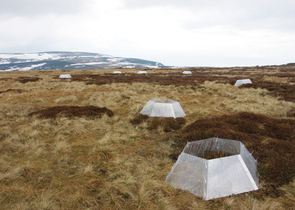Nature Conservation 4/2012 — 7. 11. 2012 — Research, Surveys and Data Management — Print article in pdf
Banaš M., Zeidler M. & Zahradník D.: Does Global Environmental Change Influence Alpine Tundra in the

Dramatic atmospheric changes were documented during past decades and current predictions indicate deepening their impacts on wild plants. Global changes are expected to be most pronounced at high altitudes: thus, mountains of intermediate elevation have been particularly vulnerable.
The authors focused on alpine heathlands at the High Sudeten Mts. (the Krkonoše/Giant Mts., Králický Sněžník Mts., Hrubý Jeseník Mts.) during the four-year project. The experiment included artificial influence of some environmental parameters (temperature, trophic conditions and moisture) and comparison of historical data set from the second half of the 20thcentury. The specific plant species and community responses, i.e. mineral composition, biomass, flowering phenology and qualitative and quantitative changes in species within the plant community, were analyzed. The results documented trophic conditions (nitrogen) and temperature as key factors being sporadically influenced by moisture and acidity of soil. Responses of plants evidenced shifts in growth processes, plant mineral constitution (C:N rate in biomass), reproduction and community composition. Much more, changes were documented in some soil parameters. The fact will affect not only the species dominancy and mutual relations but also ecosystem processes (including decomposition) in future.Recommendations proposed by the authors based on the research outputs are as follows: The return to ancient management is not feasible, nevertheless historical management restricted to experimental sites should be tested. Established monitoring system of experimental plots should be preserved. The long-time monitoring of local biodiversity “hot-spots” is also highly recommended. In the case of substantial changes (e.g., habitat unification, prevalence of competitors, etc.), particular management measures should be applied. Action plans/recovery programmes for endangered species should be developed and implemented properly.

